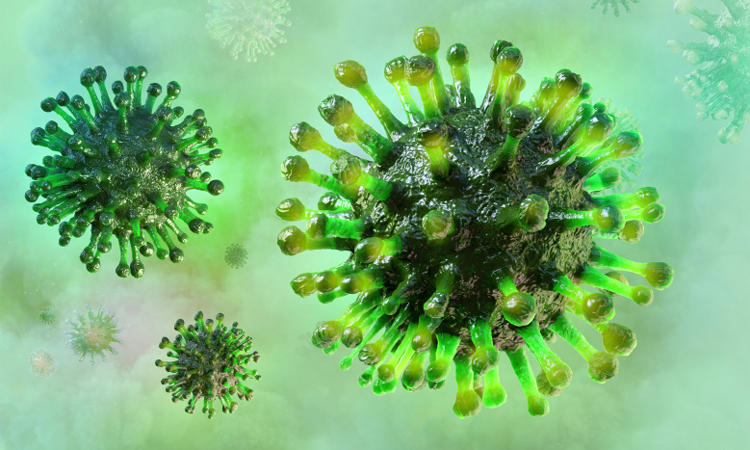Using virtual screening to identify coronavirus treatments
Posted: 10 March 2020 | Victoria Rees (Drug Target Review) | 1 comment
Drug Target Review rounds up the latest updates on research into coronavirus treatments, focusing on virtual screening to find therapies for COVID-19.

Research into finding therapies for the coronavirus COVID-19 has been mobilised to ensure that a treatment can be identified promptly. The latest developments in virtual screening to discover a possible treatment are listed here.
Two million compounds screened
The capacity of drug discovery software at Southwest Research Institute (SwRI), US, will be expanded to virtually screen drug compounds for the possible treatment of COVID-19 as well as other infectious diseases.
SwRI’s virtual screening tool recently evaluated two million drug compounds in a few days, hoping to identify high-probability drugs that may have efficacy against the coronavirus with minimal adverse side effects.
…virtual screening can rapidly increase the pace of drug discovery, especially in pandemic situations”
“In line with SwRI’s mission of developing medical countermeasures for both natural and manmade threats, we are using this proprietary molecular modelling software to help the research community screen drug candidates for future coronavirus research,” said Dr Jonathan Bohmann, an SwRI principal scientist leading the research.
Based on the modelling results, the institute will team with local research partners, including the Texas Biomedical Research Institute, for the next phase of studies to determine the most efficacious candidates for further drug development and ultimate deployment to virus-affected regions.
Prior to the recent coronavirus outbreak, SwRI increased the capacity of its software to scan 250,000 drug compounds per day, up from its prior limit of 25,000. The researchers enhanced the capability with new graphical processing, software updates and machine learning techniques.
The software’s high-throughput three-dimensional (3D) analysis of protein docking efficiently predicts how a compound interacts with the protein structure. The method allows researchers to interpret binding data from X-ray crystallography, a technique commonly used to obtain 3D structures. A model of a coronavirus was used to evaluate potential drugs from a library of compounds.
“This advanced processing capability is demonstrating that virtual screening can rapidly increase the pace of drug discovery, especially in pandemic situations,” said Dr Shawn Blumberg, an SwRI research scientist assisting with the effort.
Screening from a supercomputer
Researchers at the Department of Energy’s Oak Ridge National Laboratory (ORNL), US, have used a supercomputer to identify 77 small-molecule drug compounds that might warrant further study in the fight against the SARS-CoV-2 coronavirus, which is responsible for the COVID-19 outbreak.
The researchers performed simulations of more than 8,000 compounds to screen for those that are most likely to bind to the main Spike (S) protein of the coronavirus, rendering it unable to infect host cells. They ranked compounds of interest that could have value in experimental studies of the virus.
When Chinese researchers sequenced the virus, they discovered that it infects the body by one of the same mechanisms as Severe Acute Respiratory Syndrome (SARS). The similarity between the two virus structures facilitated the study of the new virus.
“We were able to design a thorough computational model based on information that has only recently been published in the literature on this virus,” ORNL postdoctoral researcher Micholas Smith said.
 The researchers used a chemical code to perform molecular dynamics simulations, which analyse the movements of atoms and particles in the protein. They replicated different compounds docking to the S-protein spike of the coronavirus to determine if any of them might prevent the spike from sticking to human cells.
The researchers used a chemical code to perform molecular dynamics simulations, which analyse the movements of atoms and particles in the protein. They replicated different compounds docking to the S-protein spike of the coronavirus to determine if any of them might prevent the spike from sticking to human cells.
“We ranked these compounds based on a set of criteria related to how likely they were to bind to the S-protein spike,” Smith explained.
The team found their small molecules, such as medications and natural compounds, that they suspect may be of value for experimental testing. In the simulations, the compounds bind to regions of the spike that are important for entry into the human cell and therefore might interfere with the infection process.
“Our results don’t mean that we have found a cure or treatment for the coronavirus. We are very hopeful, though, that our computational findings will both inform future studies and provide a framework that experimentalists will use to further investigate these compounds. Only then will we know whether any of them exhibit the characteristics needed to mitigate this virus,” said Jeremy Smith, director of the ORNL Center for Molecular Biophysics.
Continual screening
Insilico Medicine has announced that it will publish structures of small molecules targeting the key protein 2019-nCoV 3C-like protease. It says it will synthesise and test up to 100 molecules using its own resources and the resources offered by its partners, to contribute to the global effort.
The other structures will be published on the company’s website. By making these available to the general public, the company hopes those who are interested in finding a potential treatment for this viral infection could synthesise and test these molecules.
 According to the company, the generated molecules that are published will be continually updated.
According to the company, the generated molecules that are published will be continually updated.
For synthesis and screening, Insilico has joined forces with some internationally open research platforms and the company will make its staff and resources available to support drug discovery processes against COVID-19.
“During this difficult time, every promising approach must be used to expedite the drug discovery efforts against 2019-nCoV, including utilising the generative chemistry part of our end-to-end drug discovery pipeline. We encourage medicinal chemists to evaluate the generated molecules, provide their feedback and consider them for synthesis. Our team will also synthesise and test several of the generated compounds,” said Dr Alex Zhavoronkov, Chief Executive Officer of Insilico Medicine.
Related topics
Artificial Intelligence, Disease Research, Drug Targets, Hit-to-Lead, Informatics, Screening, Targets, Technology, Therapeutics
Related conditions
Coronavirus, Covid-19, Severe Acute Respiratory Syndrome (SARS)
Related organisations
Insilico Medicine, Oak Ridge National Laboratory (ORNL), Southwest Research Institute (SwRI)
Related people
Dr Alex Zhavoronkov, Dr Jonathan Bohmann, Micholas Smith








Considering the surface architecture of coronaviruses, I hypothesize that derivatives of long chain fatty acids could be among the potentially effective agents hindering replication of this type of viruses. It seems that fatty acids containing a long, flexible hydrocarbon chain could more easily than other molecules come into permanent contact with the virus crown while entwining its surface. Perhaps unsaturated fatty acids with a cis configuration would be preferred here, helping somewhat to “embrace” coronavirus and prevent the release of genetic material. In addition to the chain moiety, the functional groups present in fatty acid derivatives will be important. Looking at drug statistics, the most frequently appearing functional group is the amide group (including hydroxamic acids), which is able to form strong hydrogen bonds. I wonder if there have been computer molecular modeling with these types of objects. Several chemical structures derived from ricinoleic acid have been described, among others at Medicinal Chemistry Research 2019, 28, 948-958.
Sincerely,
Jozef Kula
(profesor of chemistry